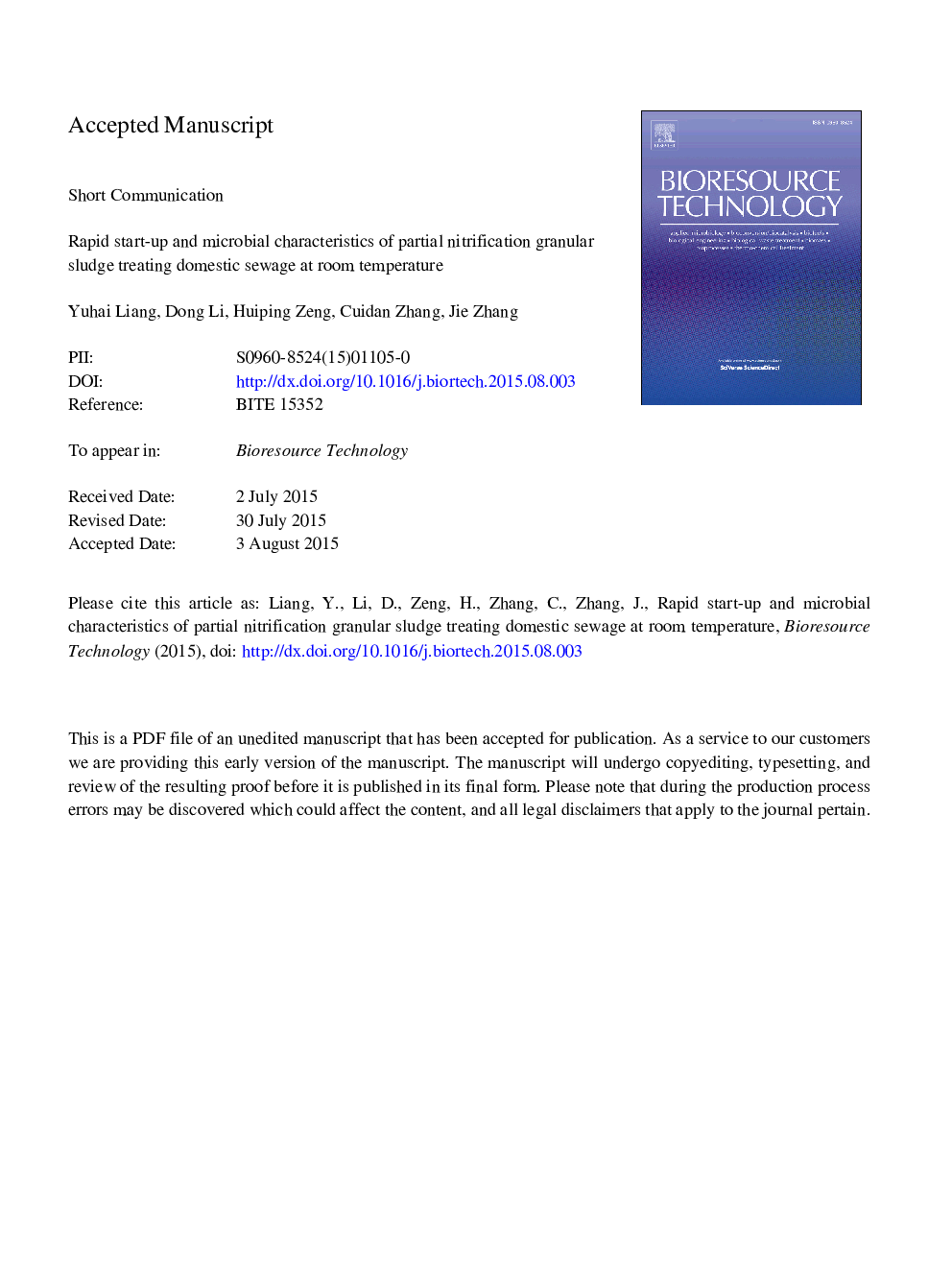| Article ID | Journal | Published Year | Pages | File Type |
|---|---|---|---|---|
| 7074212 | Bioresource Technology | 2015 | 17 Pages |
Abstract
The successful suppression of nitrite-oxidizing bacteria in the partial nitrification (PN) stage was the main challenge for the application of autotrophic nitrogen removal process treating mainstream sewage. In this study, two identical PN granular reactors (P1 and P2) were rapid started-up using the simultaneous PN and granulation strategy, for treating the domestic sewage. P1 was seeded with 30% PN granular sludge to induce nucleation, in which the granule size achieved to more than 400 μm in 12 d, with ammonia oxidation rate and nitrite accumulation rate of 80% and 95%, respectively, while P2 realized granulation in 42 d. The presence of organic matters and specific structure of granules were profitable for the stability of PN for treating sewage with low ammonia. High-throughput pyrosequencing results indicated the biodiversity of both reactors decreased after start-up, and Nitrosomonas was the predominant specie of aerobic ammonia-oxidizing bacteria in PN granular sludge.
Related Topics
Physical Sciences and Engineering
Chemical Engineering
Process Chemistry and Technology
Authors
Yuhai Liang, Dong Li, Huiping Zeng, Cuidan Zhang, Jie Zhang,
